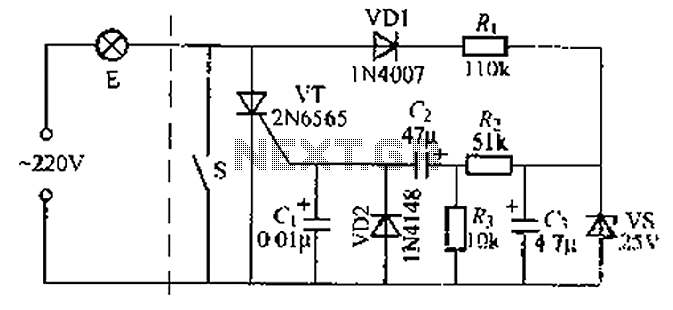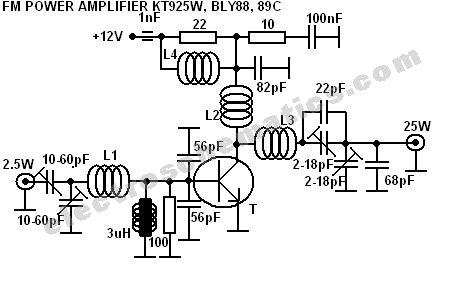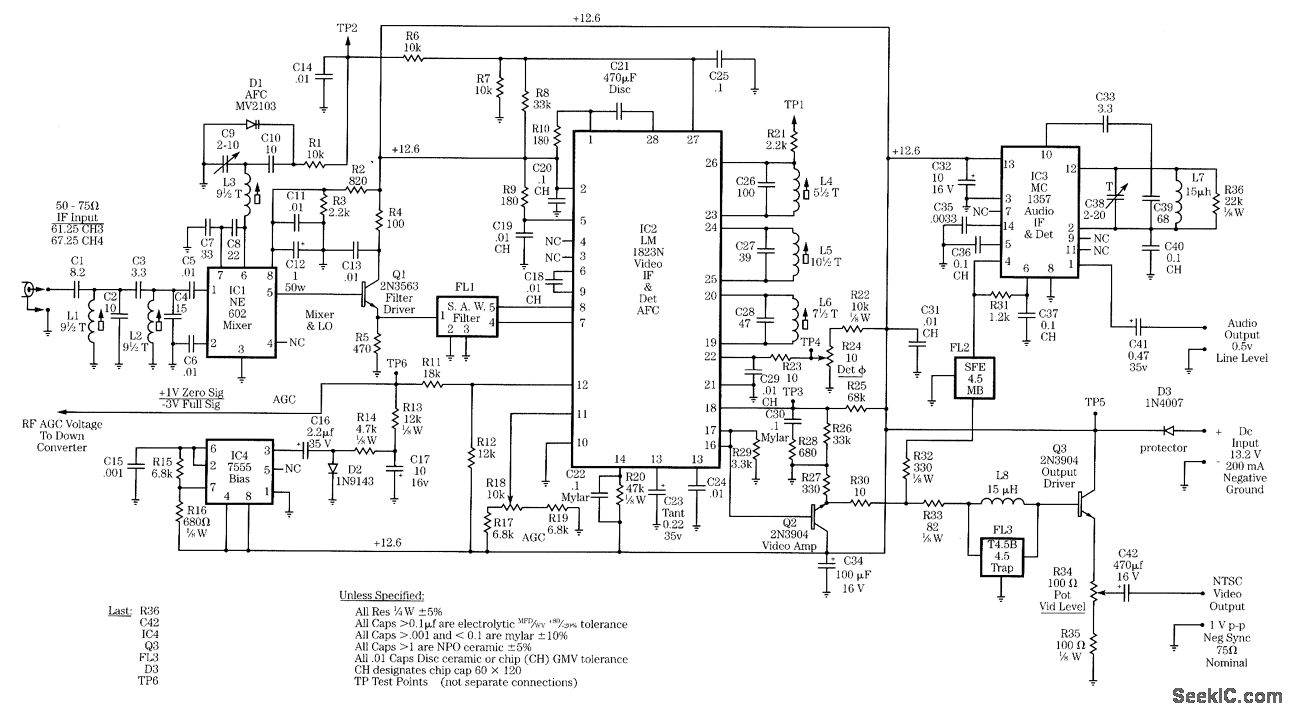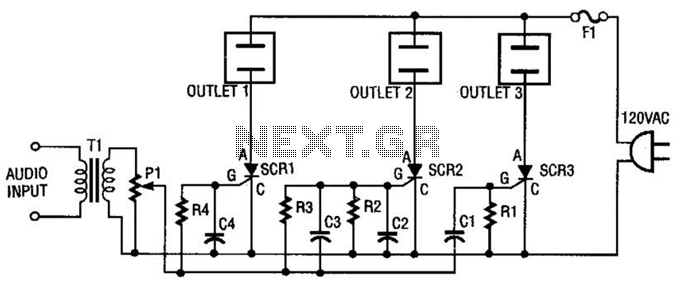
3W FM Transmitter Circuit
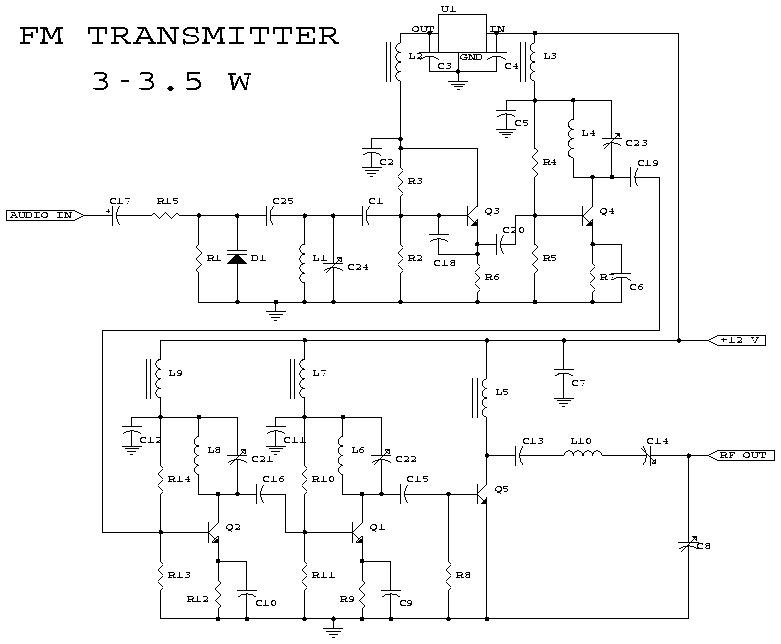
This schematic represents an FM transmitter capable of delivering an output power of 3 to 3.5 W, operating within a frequency range of 90 to 110 MHz. While the stability of the circuit is acceptable, the integration of a Phase-Locked Loop (PLL) can enhance performance. This circuit was constructed several years ago for a friend who utilized it alongside the BLY88 amplifier to achieve an output power of 20 W. According to the original schematic notes, the transmitter functioned effectively with a Standing Wave Ratio (SWR) of 1:1.05, which is typical for the antenna setup in that location. The circuit has been validated on a standard RF testing breadboard featuring a copper side, with necessary connections established between both sides. It is recommended to assemble the transmitter within a radio frequency (RF) shielded enclosure, employing high-quality connectors and cables, while ensuring adequate shielding between the various stages of the circuit and adhering to established RF construction guidelines.
The FM transmitter circuit is designed to operate efficiently within the specified frequency range, utilizing components that facilitate optimal signal transmission and reception. The core of the circuit typically includes an oscillator stage, which generates the carrier frequency, and a modulator stage that imposes the audio signal onto the carrier wave. The output stage is responsible for amplifying the modulated signal to the desired power level.
In the context of enhancing stability, the addition of a PLL can significantly improve frequency accuracy and reduce drift, which is particularly beneficial for applications requiring precise frequency control. The PLL works by continuously comparing the output frequency with a reference frequency and adjusting the oscillator accordingly to maintain a locked condition.
The BLY88 amplifier, noted for its high power output capabilities, is integrated into the circuit to boost the signal strength further. This combination allows for effective transmission over longer distances, making it suitable for various applications, including community broadcasting or personal use.
The circuit's performance has been validated under practical conditions, with an SWR measurement indicating efficient power transfer from the transmitter to the antenna. An SWR value of 1:1.05 suggests minimal reflected power, which is crucial for maintaining the longevity of the transmitter and ensuring optimal performance.
Constructing the transmitter requires careful attention to detail, particularly in the layout of the circuit board and the selection of components. RF shielding is essential to minimize interference and ensure that the transmitted signal remains clean and undistorted. Proper grounding techniques and the use of high-quality connectors and cables will further enhance the overall performance and reliability of the transmitter system.
In summary, this FM transmitter schematic offers a robust solution for achieving reliable and efficient transmission within the specified frequency range, with considerations for stability and signal integrity through the potential integration of a PLL and careful construction practices.This is the schematic for an FM transmitter with 3 to 3. 5 W output power that can be used between 90 and 110 MHz. Although the stability isn`t so bad, a PLL can be used on this circuit. This is a circuit that I`ve build a few years ago for a friend, who used it in combination with the BLY88 amplifier to obtain 20 W output power. From the notes tha t I made at the original schematic, it worked fine with a SWR of 1 : 1. 05 (quite normal at my place with my antenna). 2. The circuit has been tested on a normal RF-testing breadboard (with one side copper). Make some connections between the two sides. Build the transmitter in a RF-proof casing, use good connectors and cable, make a shielding between the different stages, and be aware of all the other RF rules of building. 🔗 External reference
The FM transmitter circuit is designed to operate efficiently within the specified frequency range, utilizing components that facilitate optimal signal transmission and reception. The core of the circuit typically includes an oscillator stage, which generates the carrier frequency, and a modulator stage that imposes the audio signal onto the carrier wave. The output stage is responsible for amplifying the modulated signal to the desired power level.
In the context of enhancing stability, the addition of a PLL can significantly improve frequency accuracy and reduce drift, which is particularly beneficial for applications requiring precise frequency control. The PLL works by continuously comparing the output frequency with a reference frequency and adjusting the oscillator accordingly to maintain a locked condition.
The BLY88 amplifier, noted for its high power output capabilities, is integrated into the circuit to boost the signal strength further. This combination allows for effective transmission over longer distances, making it suitable for various applications, including community broadcasting or personal use.
The circuit's performance has been validated under practical conditions, with an SWR measurement indicating efficient power transfer from the transmitter to the antenna. An SWR value of 1:1.05 suggests minimal reflected power, which is crucial for maintaining the longevity of the transmitter and ensuring optimal performance.
Constructing the transmitter requires careful attention to detail, particularly in the layout of the circuit board and the selection of components. RF shielding is essential to minimize interference and ensure that the transmitted signal remains clean and undistorted. Proper grounding techniques and the use of high-quality connectors and cables will further enhance the overall performance and reliability of the transmitter system.
In summary, this FM transmitter schematic offers a robust solution for achieving reliable and efficient transmission within the specified frequency range, with considerations for stability and signal integrity through the potential integration of a PLL and careful construction practices.This is the schematic for an FM transmitter with 3 to 3. 5 W output power that can be used between 90 and 110 MHz. Although the stability isn`t so bad, a PLL can be used on this circuit. This is a circuit that I`ve build a few years ago for a friend, who used it in combination with the BLY88 amplifier to obtain 20 W output power. From the notes tha t I made at the original schematic, it worked fine with a SWR of 1 : 1. 05 (quite normal at my place with my antenna). 2. The circuit has been tested on a normal RF-testing breadboard (with one side copper). Make some connections between the two sides. Build the transmitter in a RF-proof casing, use good connectors and cable, make a shielding between the different stages, and be aware of all the other RF rules of building. 🔗 External reference

